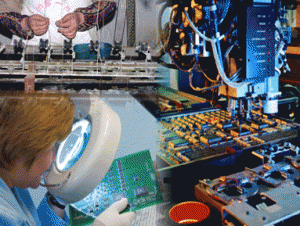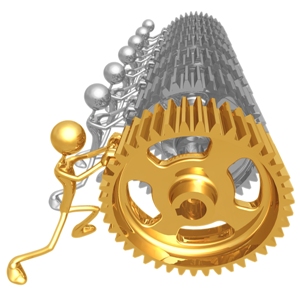 Recent statistics show that manufacturing in the UK is now as low as 11% of GDP and employment in manufacturing has fallen by a massive 9% since Sept 2008.
Recent statistics show that manufacturing in the UK is now as low as 11% of GDP and employment in manufacturing has fallen by a massive 9% since Sept 2008.
Staggering figures – so what’s the solution, if in fact one is needed.
As manufacturing jobs are generally well paid compared to the rest of the economy and as each manufacturing role supports a number of others in the supply chain it would seem logical that an increase in the number of manufacturing jobs will lead to a more diversified and robust economy.
So, how do we go about generating more manufacturing jobs. Do we introduce tariffs on Chinese goods ? Impose extra duties on imports ? – we could do this but in the end we may do more damage to British business than good.
Many companies have survived by outsourcing activities to China, the Far East and elsewhere and whereas some would argue this has cost British jobs the counter argument is, that without outsourcing, these companies would have gone bust and cost even more jobs.
Capitalism is a dynamic competitive environment and, like its biological counterpart, the most able to adapt will survive.
Wherever a company or organization exists, in order to compete, survive and thrive it needs to Innovate.
It needs to develop new products and services and bring them to market.
In the current climate this is even more critical.
Innovation enables the most able to adapt to survive.


 Sometimes, despite best efforts at Risk Management, we drift off plan. In the worst case this means we won’t be able to meet our customer commitments.
Sometimes, despite best efforts at Risk Management, we drift off plan. In the worst case this means we won’t be able to meet our customer commitments.
 As Project Manager you will have primary contact with the customer but should you take team members with you on customer visits ?
As Project Manager you will have primary contact with the customer but should you take team members with you on customer visits ?
 hustle and bustle I came across a memorial to Dr Martin Luther King Jr and read about that great man and the sacrifices he made for freedom and equality.
hustle and bustle I came across a memorial to Dr Martin Luther King Jr and read about that great man and the sacrifices he made for freedom and equality. Several years later in 2005 I watched in horror as Katrina devastated New Orleans. What seemed worse was that it took the Federal Government 3 days to respond while the poverty stricken people of Loiusiana, the vast majority being black, fought for survival amid the rising tide and chaos. The area was like a Third World country, not The United States of America.
Several years later in 2005 I watched in horror as Katrina devastated New Orleans. What seemed worse was that it took the Federal Government 3 days to respond while the poverty stricken people of Loiusiana, the vast majority being black, fought for survival amid the rising tide and chaos. The area was like a Third World country, not The United States of America. Today, following on from announcing their intention to ban the controversial muslim Burkha, Nigel Farage announced UKIP’s intention to ban the traditional Scottish kilt !
Today, following on from announcing their intention to ban the controversial muslim Burkha, Nigel Farage announced UKIP’s intention to ban the traditional Scottish kilt ! United Kingdom…”
United Kingdom…” Friday’s News that Automotive component supplier Bosch is closing its plant in South Wales and moving manufacturing to Hungary was grim news for employees.
Friday’s News that Automotive component supplier Bosch is closing its plant in South Wales and moving manufacturing to Hungary was grim news for employees. Anyone involved in New Product Introduction (NPI) knows how critical time to market is but do they know how to quantify it?
Anyone involved in New Product Introduction (NPI) knows how critical time to market is but do they know how to quantify it? It is essential, when starting a project, that the team fully understands what the Objective is. This might sound obvious but is also something which is often overlooked. Sometimes the team is formed and the project kicked off without any clear statement about the Objective of the project. Consequently different Team members have different views on what the Objective is and this inevitably leads to unnecessary conflict and wasted effort.
It is essential, when starting a project, that the team fully understands what the Objective is. This might sound obvious but is also something which is often overlooked. Sometimes the team is formed and the project kicked off without any clear statement about the Objective of the project. Consequently different Team members have different views on what the Objective is and this inevitably leads to unnecessary conflict and wasted effort.